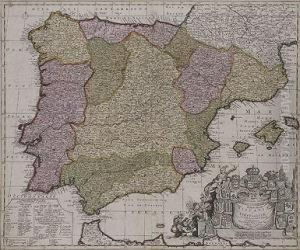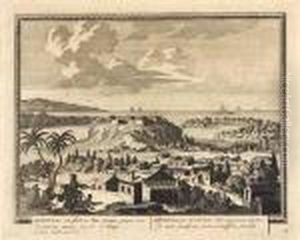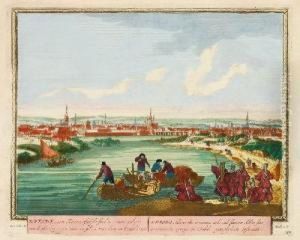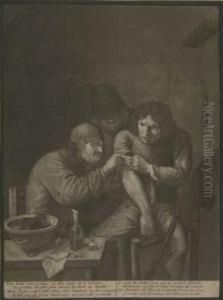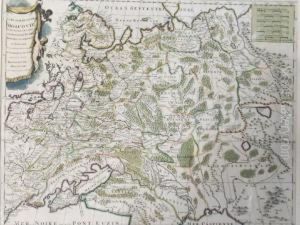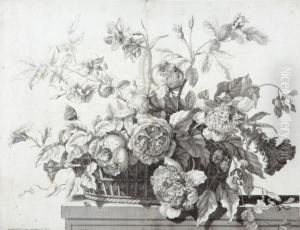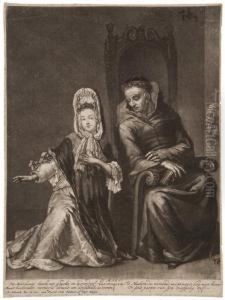Pieter I Schenck Paintings
Pieter Schenck, also known as Pieter I Schenck or Petrus Schenckius, was a Dutch printmaker and publisher active during the late 17th and early 18th centuries. Born in Elberfeld, which is now part of Wuppertal, Germany, in 1660, Schenck moved to Amsterdam around 1675, where he began his career in the thriving Dutch art market.
Schenck's work as an engraver and mezzotint artist was well-regarded at the time. He produced a wide range of prints, including portraits, landscapes, and genre scenes. One of his significant contributions to the art world was his work with mezzotints, a printmaking process that allowed for the creation of images with a wide range of tones, making them appear more painterly and detailed than other print forms of the time. This technique was relatively new to the Dutch art scene when Schenck began using it, and his mastery of it helped popularize the medium in the Netherlands.
In addition to his work as an artist, Schenck was also a successful publisher. He published numerous maps and atlases, capitalizing on the Dutch Golden Age's appetite for cartographic materials. His business acumen and artistic skill allowed him to collaborate with other prominent artists and cartographers of the time, further cementing his reputation in the industry.
Schenck's legacy is not only in the works he produced but also in his influence on the printmaking industry in Amsterdam. His prints were widely distributed, and his style influenced subsequent artists. He was also involved in the training of other printmakers, contributing to the development of the craft.
Pieter Schenck died in Amsterdam, with sources varying on the exact year of his death, stating either 1718 or 1719. His contributions to the art of printmaking, particularly mezzotint, and his successful publishing ventures, remain notable achievements in the history of Dutch art.
![Afbeeldinge Der Voornaamste Gebouwen Van Amsterdam.
Amsterdam: Barent Greve, S.d., [circa 1700]](https://www.niceartgallery.com/imgs/1591532/s/pieter-i-schenck-afbeeldinge-der-voornaamste-gebouwen-van-amsterdam-amsterdam-barent-greve-sd-circa-1700-8dc62800.jpg)
